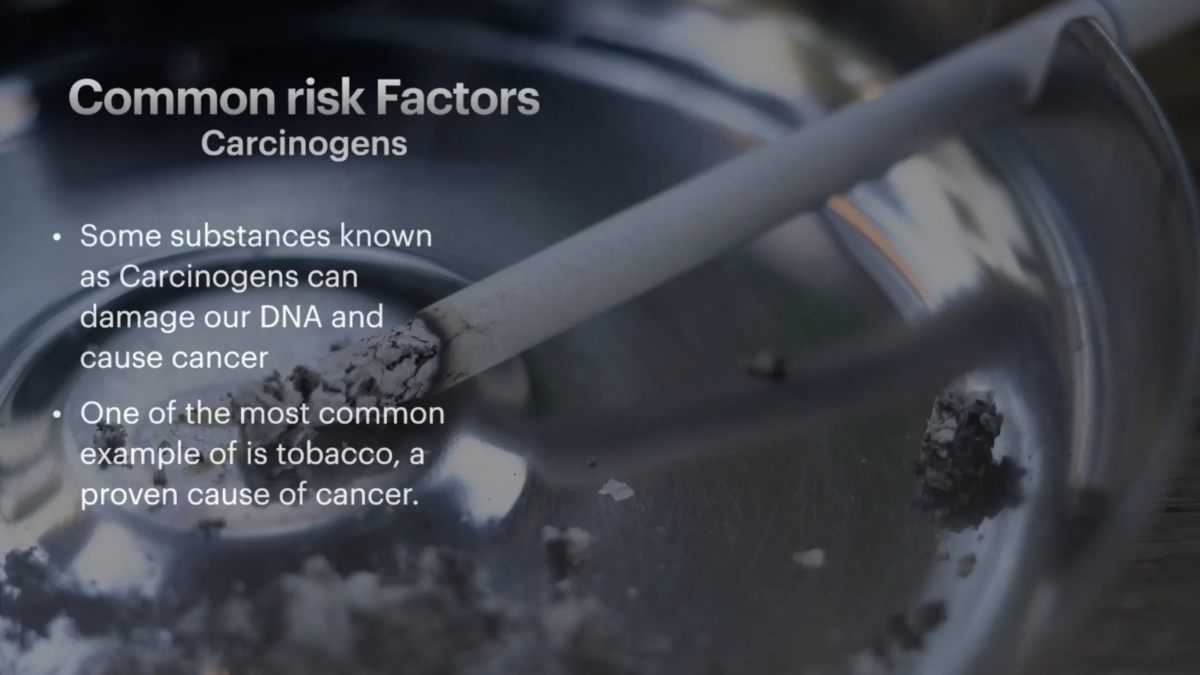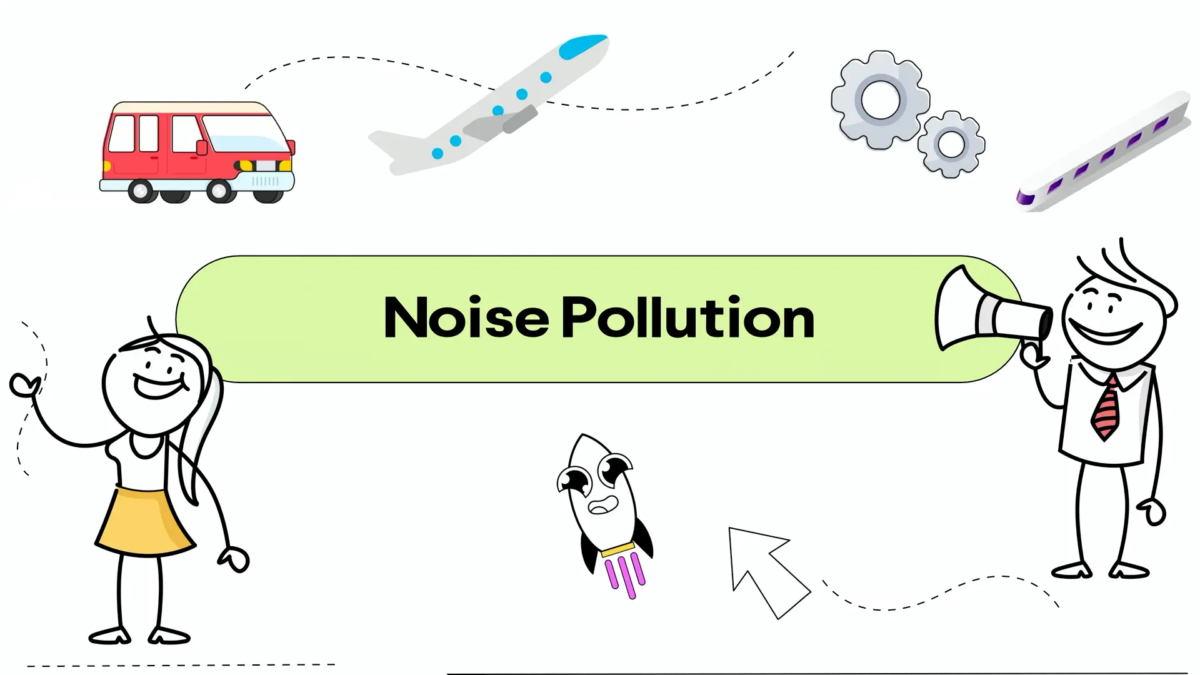Explore the intersection of risk factors and health in the modern era. This comprehensive guide, “Risk Factors Demystified: Decoding Risks and Health in the Contemporary World,” delves into the various factors that impact our well-being. Discover how understanding and managing these risks can lead to a healthier and more informed life.
10 Craziest Things China Did To Overcome Its Air Pollution!

Friends in the third article in the series on Air pollution, in this article we will explore China’s effort to control its air pollution.
It is customary to describe the Chinese experience with a sense of admiration, often overlooking the specific historical circumstances that led to the implementation of certain policies. Both the economic giants share similarities in many aspects like history culture population etc. In light of this, what valuable lessons can India draw from China in the context of its policies on controlling air pollution?
There is a stark similarity between India and China
Culture,
Population,
Emerging superpower
Economy
Air pollution
China and India are the world’s top economies but wait at what cost?
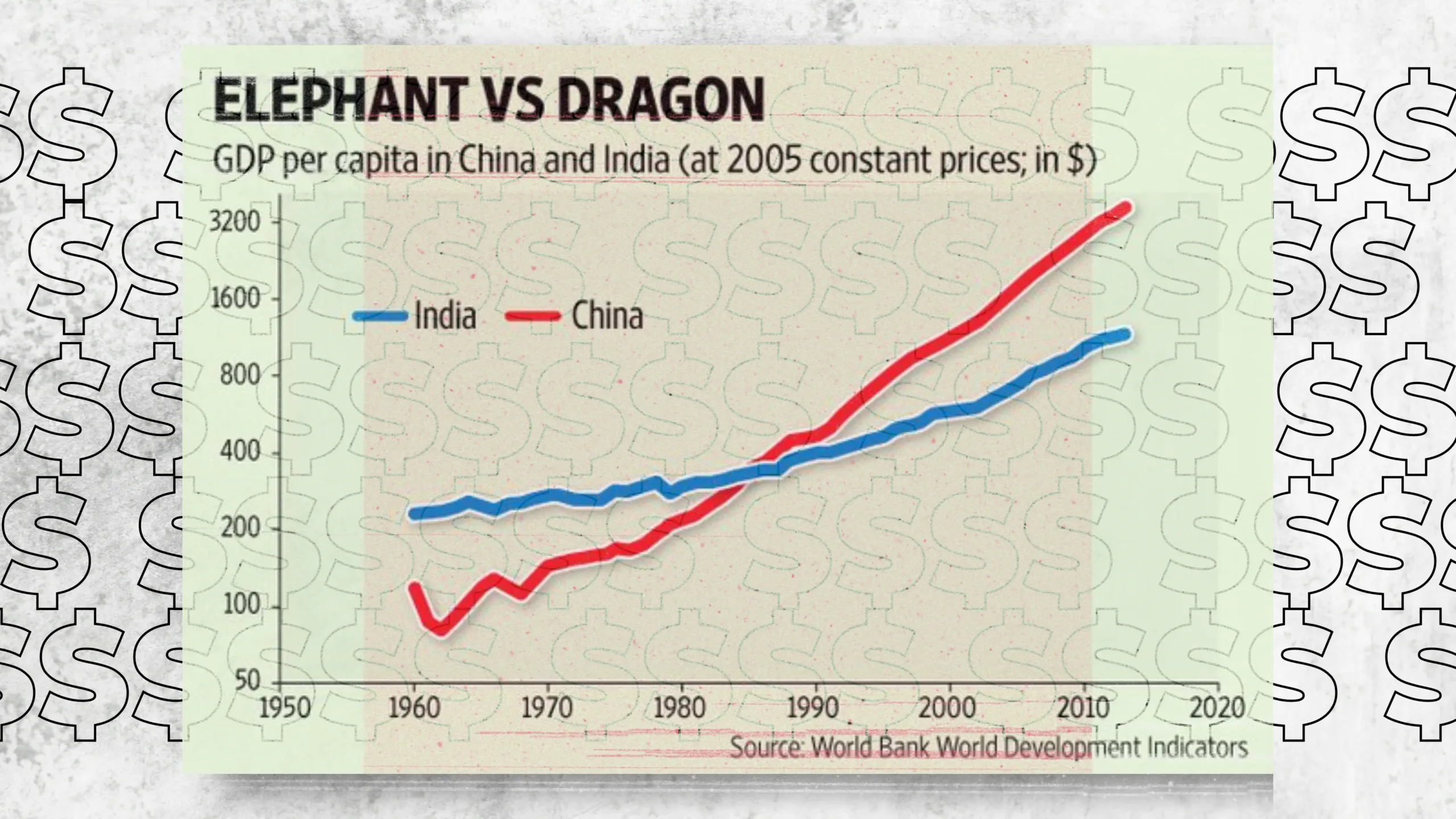
“With Great economy comes great pollution”

Well not exactly!
After receiving global criticism for its deteriorating air quality, the country was on war foot to reduce it,
and surprised the world!
How?
Flashback To Chin’s Air Pollution!
In an attempt to showcase its development and grand entrance to the world, China hosted its first-ever Olympic games in 2008.
Over 10000 athletes from Over 200 countries participated in this event in Beijing. And yet, even when its image mattered the most, China still couldn’t control its pollution.
The city was covered in its signature, dangerously thick, grey smog. In 2013, China experienced some of its highest pollution levels to that point, and public criticism reached new heights.

So as India’s Air Pollution
As many of you know, major cities like New Delhi are currently facing severe air pollution challenges, and it’s crucial that we find effective solutions. So, let’s explore how India can learn from China’s experience.
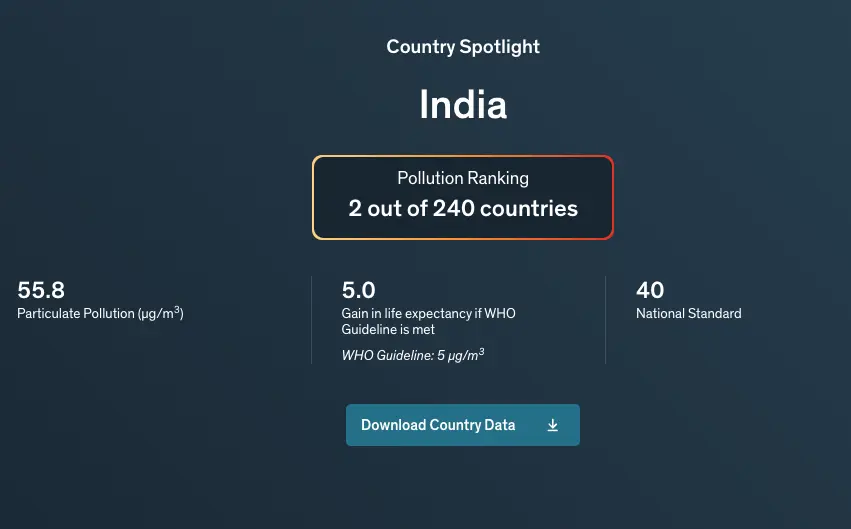
China Planed to Control its Air Pollution
The Chinese government initiated a National Air Quality Action Plan in the fall of 2013, laying out specific targets to improve air quality by the end of 2017.
The plan included a $270 billion initiative to reduce annual average PM2.5 concentrations in the densely populated Beijing-Tianjin-Hebei area by 25 percent, and in the Pearl and Yangtze River Delta regions by 15 and 20 percent, respectively.
Their comprehensive approach included measures such as improving industrial emissions, promoting renewable energy sources, and encouraging the use of electric vehicles.
Let’s take a moment to compare the air pollution charts of India and China. As you can see, there is a stark contrast. China’s proactive measures resulted in a steady decline in pollution levels, while India continues to struggle with high pollution levels. If the reductions are sustained, China’s people can expect to live 1.4 years longer.
How Could China Be Able To Overcome Air Pollution?
Let’s explain it in 10 steps that China took to control air pollution same can be replicated by any country struggling with bad air quality.
1. Reducing the no of vehicles on the road:

In Beijing, You Have to Win a License Lottery to Buy a New Car
Yes, you read it right!
Cities such as Beijing, Guangzhou, and Guiyang have only a small number of new license plates, which they issue through a lottery system.
To address the growing number of vehicles on the roads, especially in major cities, the Chinese government introduced a system that limits the issuance of new vehicle registrations through a lottery system.
Here’s how the lottery system for vehicle registration works:
1. Limited vehicle registration quotas:
The government sets a specific number of vehicle registration quotas available for a given period, typically annually or monthly, depending on the city.
2. Eligibility through a lottery:
Individuals interested in purchasing a new vehicle must participate in the lottery system to secure a registration slot.
The odds of winning the lottery are so low that locals joke about winning the actual lottery!
3. Incentives for cleaner vehicles:
Some cities in China provide additional incentives within the lottery system to encourage the purchase of electric and hybrid vehicles. These incentives can include higher chances of winning a registration slot or special benefits for owners of eco-friendly vehicles.
4. Monitoring and enforcement:
The government closely monitors the lottery system to ensure its effectiveness and prevent any fraudulent activities or misuse of registration slots.
Auctions for New License Plates

In contrast, Shanghai takes a different approach by conducting auctions for new license plates, selling them to the highest bidder. These plates fetch an average price of $14,230, which is more than China’s per capita GDP and significantly higher than the value of most cars they are meant for. Therefore, purchasing a car in Shanghai can be quite challenging unless you possess substantial financial resources, influential connections, or incredible luck.
“Odd-Even” or “Alternate Day” Driving

1. Based on the last digit of the vehicle’s registration number: The policy divides vehicles into two groups based on the last digit of their registration number. For example, vehicles with odd-numbered plates may be allowed to drive on certain days, while vehicles with even-numbered plates may be permitted on alternate days.
2. This alternation helps reduce traffic congestion and air pollution by decreasing the number of vehicles on the road each day.
3. The driving restriction policy may have exemptions for certain vehicle types, such as public transportation, emergency vehicles, or vehicles with specific permits. Additionally, the policy may vary across cities or regions, with different schedules and regulations in place.
Monitoring Of Air Pollution Guidelines
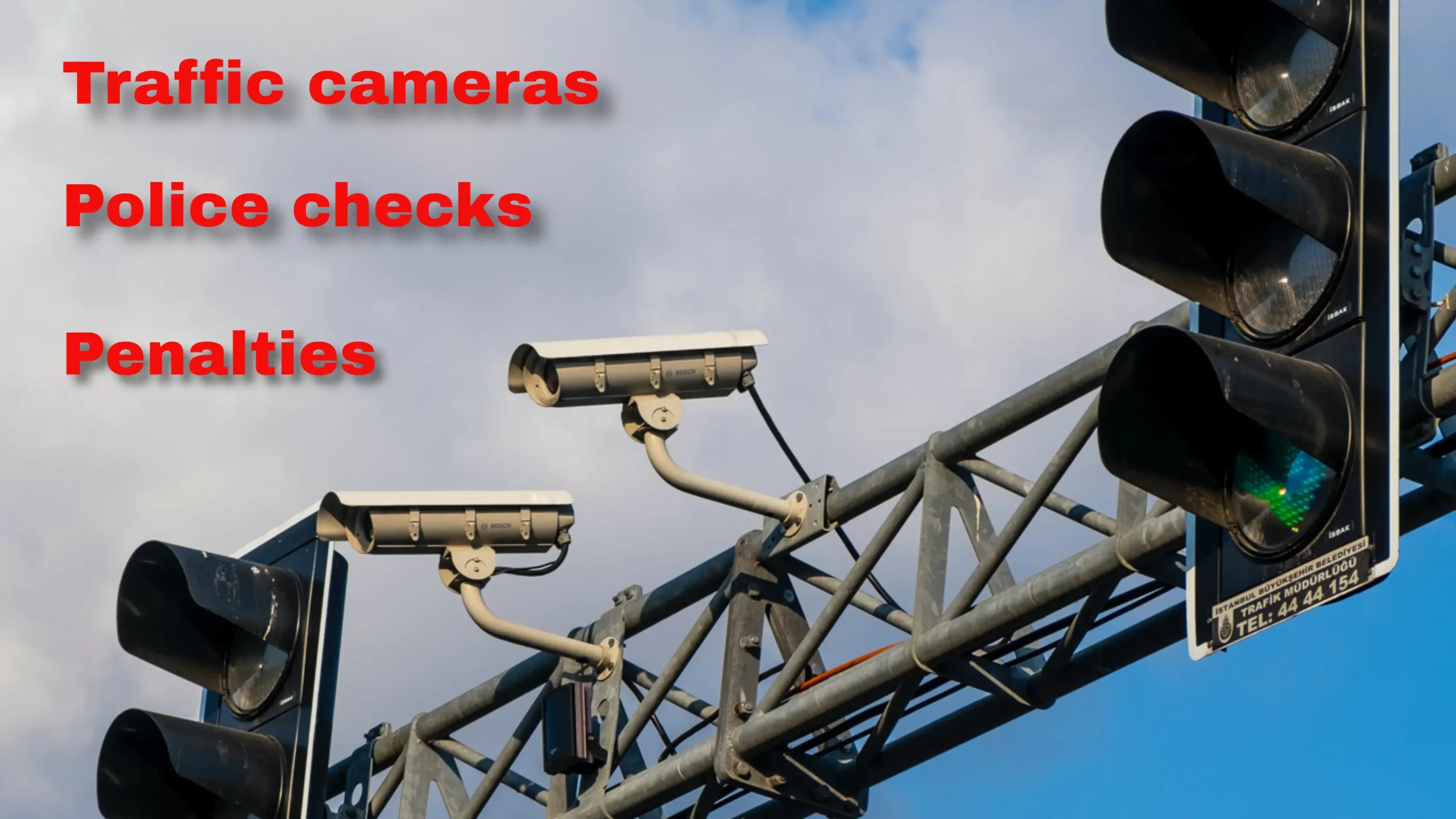
Local authorities monitor and enforce the driving restriction policy through various means, including traffic cameras, police checks, and penalties for non-compliance. Violators may face fines or other consequences to ensure compliance with the policy. For example, rule breakers get three points on their license, 12 of which suspends their ability to drive.
By implementing this policy, China encourages the use of alternative transportation methods, such as public transit or carpooling, on designated driving-restricted days.
2. Implementation of Strict Emission Standards Of Air Pollution:

China enforced stringent emission standards for industries, vehicles, and power plants. These standards aimed to reduce the release of pollutants into the air. Shockingly China implemented these so strictly that it paralyzed its auto market.
There are three common types of coal plants — subcritical, supercritical, and ultra-supercritical.
The first being low-temperature and less efficient, the last being high-temperature and more efficient.
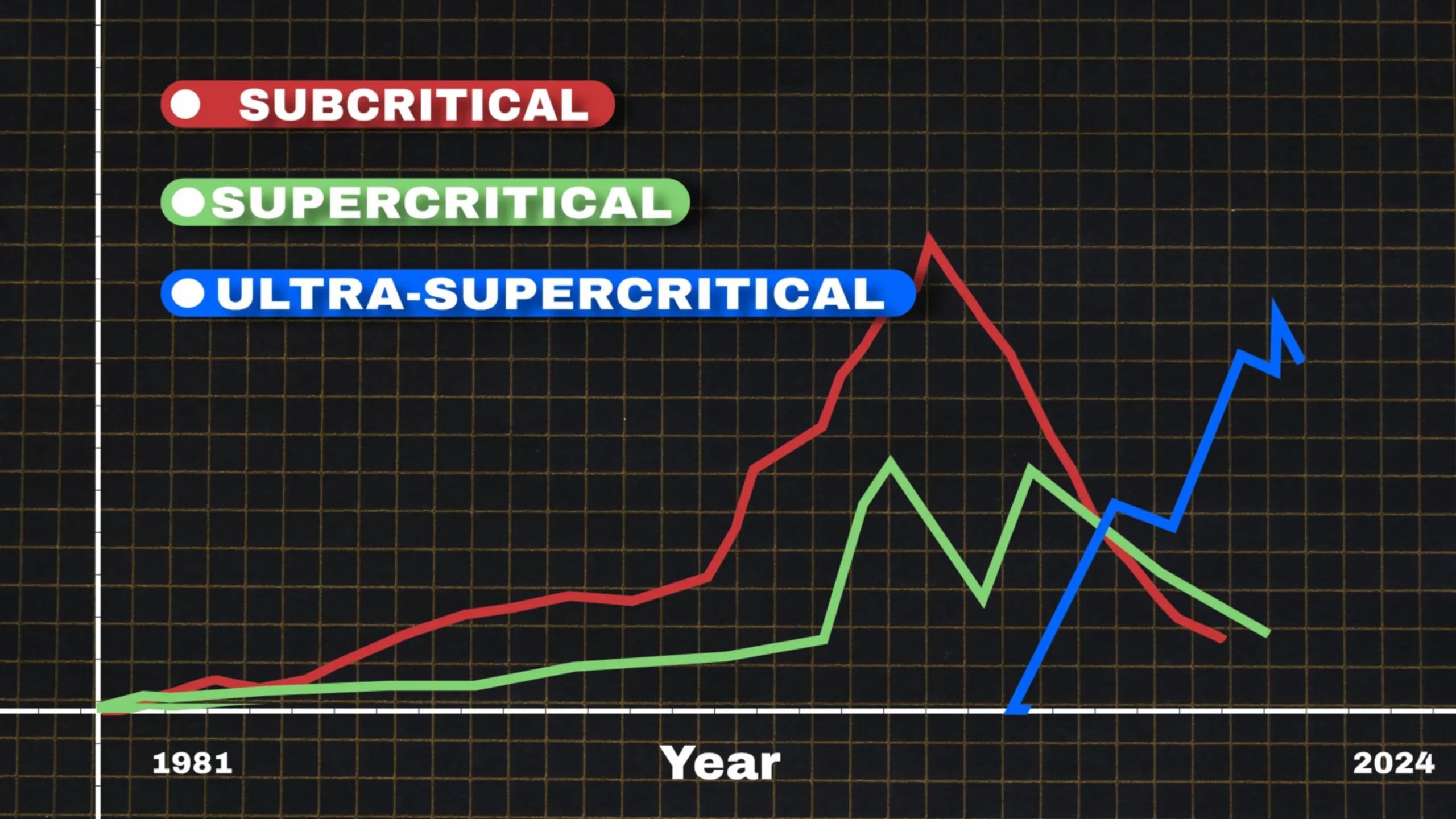
Over time, China has been building fewer and fewer subcritical plants, and more and more efficient ones, thus reducing coal consumption and eventually lowering air pollution.
3. Reduction of coal consumption For Air Pollution:
China focused on decreasing its reliance on coal, a major contributor to air pollution. They implemented policies to promote cleaner energy sources and transitioned from coal to natural gas and renewables.
4. Introduction of cleaner technologies:
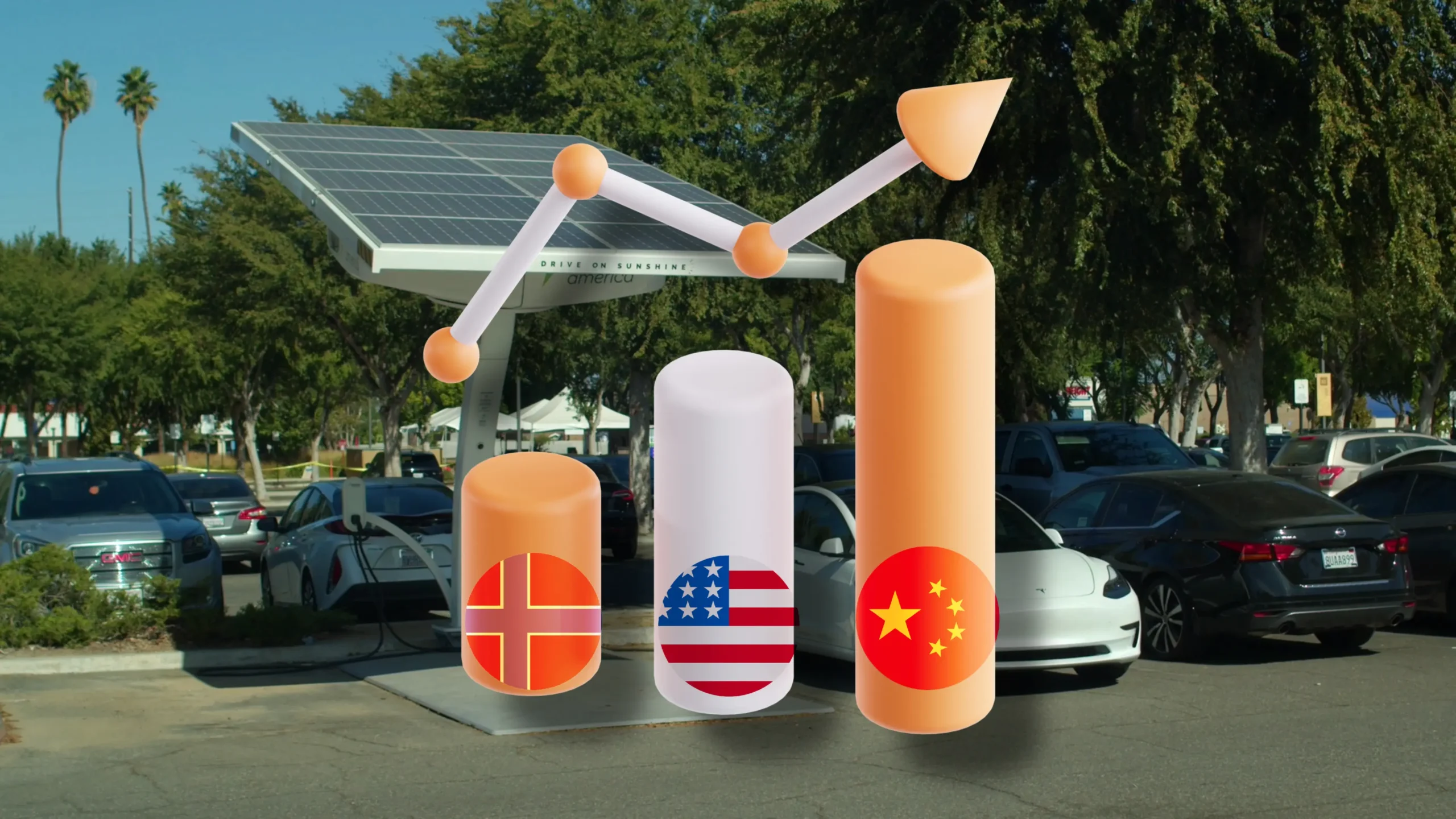
China encouraged the adoption of cleaner technologies in various sectors, including industry, transportation, and power generation. This included the promotion of electric vehicles and the development of renewable energy sources. So it’s no surprise that China buys more electric vehicles than the rest of the world combined.
5. Expansion of public transportation:
China invested heavily in expanding its public transportation infrastructure, such as metro systems and high-speed railways. This aimed to reduce the number of private vehicles on the road and subsequently lower pollution levels.
6. Improvement of industrial emissions:
The Chinese government introduced measures to improve industrial emissions by upgrading pollution control technologies and enforcing stricter monitoring.
7. Adoption of renewable energy:

China made significant efforts to increase the use of renewable energy sources like solar and wind power. They invested in renewable energy projects, developed large-scale solar and wind farms, and incentivized the adoption of clean energy technologies.
8. Implementation of pollution control measures in key industries:
China targeted key polluting industries, such as steel and cement production, and implemented strict pollution control measures to reduce emissions and improve air quality.
9. Strengthening of environmental enforcement:
The Chinese government improved environmental enforcement mechanisms, including increased monitoring, stricter penalties for non-compliance, and enhanced supervision to ensure industries and entities adhered to pollution control regulations.
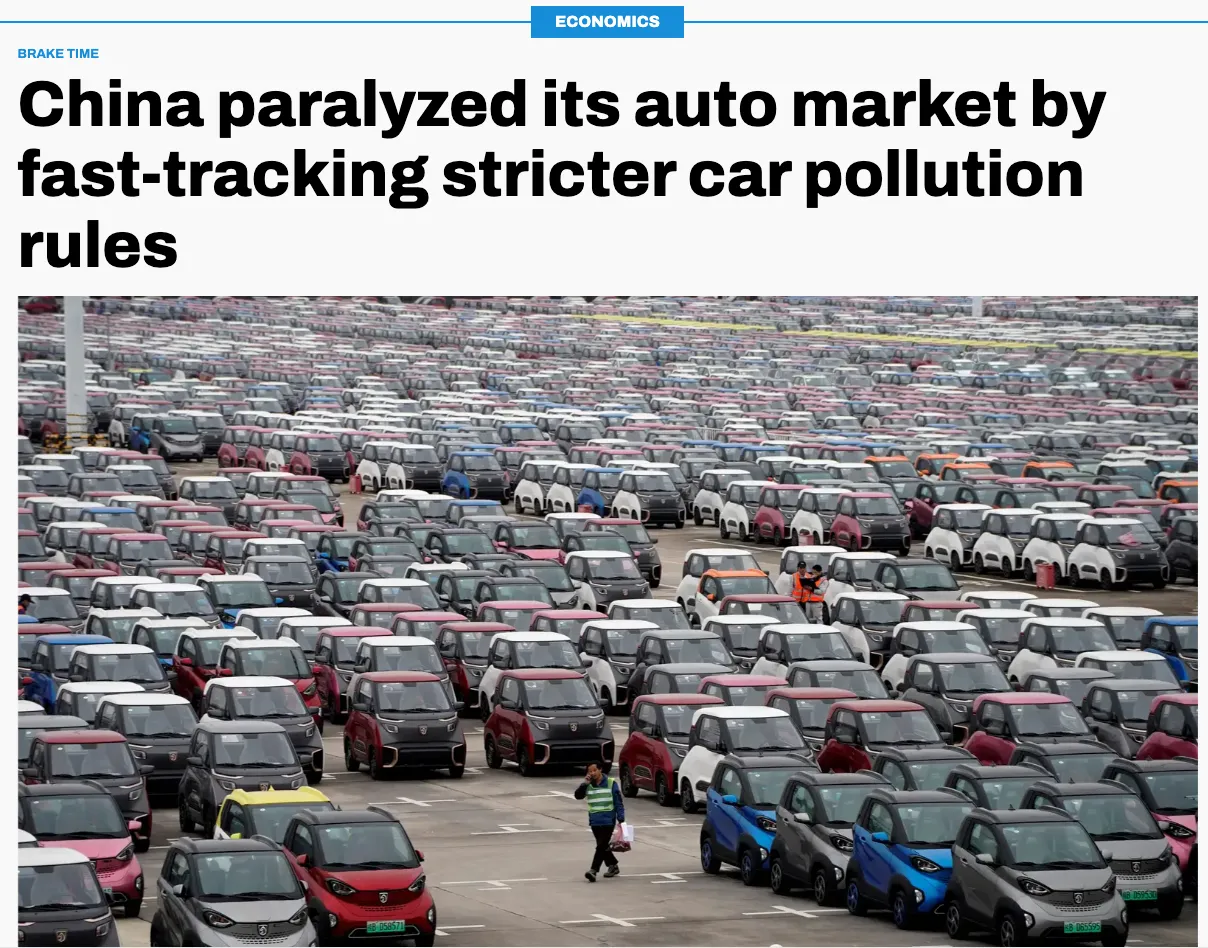
10. Public awareness and education campaigns:
China launched extensive public awareness campaigns to educate its citizens about the importance of reducing pollution and adopting sustainable practices. These campaigns focused on promoting individual responsibility and encouraging lifestyle changes.
These ten steps illustrate the comprehensive approach that China took to curb its air pollution crisis, leading to significant improvements in air quality over time.
Air Pollution: The Poison You Never Know You Are Breathing-I!
Although it is said Air pollution is a modern world problem but it is only partially correct.
- 99% of the world’s population is living in places where the WHO air quality guidelines levels are not met.
- Some 89% of those premature deaths occurred in low- and middle-income countries and the greatest number in the WHO South-East Asia and Western Pacific Regions.
The problem of air pollution has evolved over the period of time as man evolved over the period of time adapting to industrialization and technology, as he is dreaming to make a better world. There was a gradual rise in air pollutants, however, the early accounts of several smog episodes that occurred in various cities pointed to the setback of such modernization.

The most infamous incident was the Great Smog of London in 1952, which resulted in thousands of deaths. The aftermath of such events results in awareness of the dangers of air pollution. Subsequently, it prompted governments to take more significant action.
Welcome back friends to the discussion of another environmental issue. Today we are going to explore air pollution and the types of air pollutants responsible for it.
What Is Air Pollution?
Air pollution is defined as the presence of harmful substances like mixed particles or gases in the air at a concentration considered to be harmful to all living being. Basically, it is the contamination of air by harmful gases, dust, and smoke.
Air pollution also refers to any physical, chemical, or biological change in the air. It can be both indoor and outdoor air pollution.
Air pollution is caused by various reasons including human activities such as burning fossil fuels, industrial processes, and transportation, as well as natural sources such as wildfires and volcanic eruptions.
Which Are the Air Pollutants?

Soot, Mold, pollens, Carbon monoxide, sulfur dioxide, nitrogen oxides, ozone, and particulate matter are some examples of air pollutants.
Again, it has been divided into primary and secondary air pollutants
Primary Air Pollutants

Primary pollutants are pollutants that are emitted directly into the atmosphere from a specific source, such as a factory, power plant, or vehicle.
Examples of primary pollutants are
Carbon Monoxide (CO)
Carbon monoxide is a colorless and odorless gas produced by the incomplete combustion of fossil fuels. It is primarily emitted from vehicle exhaust and can be harmful when inhaled in high concentrations. Carbon monoxide reduces the oxygen-carrying capacity of blood and can cause headaches, dizziness, and even death.
Sulfur dioxide (SO2)
Sulfur dioxide is a gas produced when fossil fuels containing sulfur are burned, particularly in power plants and industrial facilities. It is a major contributor to acid rain formation and can cause respiratory problems when inhaled in high concentrations.
Nitrogen oxides (NOx)
Nitrogen oxides are a group of gases containing nitrogen and oxygen atoms. They are primarily produced by the combustion of fossil fuels in vehicles, power plants, and industrial processes. Nitrogen oxides contribute to the formation of smog, acid rain, and the depletion of the ozone layer.
Particulate matter (PM)
Particulate matter refers to tiny particles suspended in the air, which can be solid or liquid in nature. These particles can vary in size and composition. Fine particulate matter, known as PM2.5, has a diameter of 2.5 micrometers or less and can penetrate deep into the respiratory system, causing respiratory problems and cardiovascular issues.
Volatile organic compounds (VOCs)

Volatile organic compounds are organic chemicals that easily vaporize at room temperature. They are emitted from various sources such as solvents, paints, cleaning products, and industrial processes. VOCs can have adverse health effects and contribute to the formation of ground-level ozone, a major component of smog.
Lead
Lead – a toxic metal that was once widely used in gasoline and other products, but has been largely phased out due to health concerns.
Secondary Air Pollutants
Secondary pollutants are pollutants that are formed in the atmosphere through chemical reactions between primary pollutants and other substances, such as sunlight and atmospheric gases.
These pollutants can be just as harmful as primary pollutants and are often more difficult to control.

Ozone (O3)
Ozone is a gas that occurs naturally in the Earth’s upper atmosphere, forming the ozone layer. However, at ground level, it is a harmful pollutant and a key component of smog. Ground-level ozone is formed when nitrogen oxides and volatile organic compounds react in the presence of sunlight. It can cause respiratory issues and worsen existing respiratory conditions.
Sulfuric acid (H2SO4)
Sulfuric acid is a compound formed through the reaction of sulfur dioxide with water vapor in the atmosphere.
Nitric acid (HNO3)
Nitric acid is a compound formed through the reaction of nitrogen dioxide with water vapor in the atmosphere.
Particulate matter (PM)
Particulate matter can also be formed through the reaction of primary pollutants with other substances in the atmosphere.
There are a group of six air pollutants that are regulated by the United States Environmental Protection Agency (EPA) under the Clean Air Act.
Carbon monoxide, Sulfur dioxide, Nitrogen oxides, Particulate matter, Ozone, and Lead – are considered to be among the most harmful to human health and the environment, and are monitored to ensure compliance with air quality standards.
Based on the chemical composition of air pollutants it can be classified as
Particulate and non-particulate pollutants
Particulate Air Pollutants:
Dust, Lead, smoke, soot, etc. are tiny particles of solid or liquid matter that can be inhaled and can cause serious health problems.
What is particulate?
Particulates, also known as Suspended Particulate Matter (SPM) are tiny particles of solid or liquid matter that are suspended in the air.

Suspended Particulate Matter (SPM)
SPM includes particles of different sizes, ranging from coarse particles (between 2.5 and 10 micrometers in diameter) to fine particles less than 2.5 micrometers in diameter known as PM2.5.
Sources of SPM include natural sources such as dust storms and volcanic eruptions, as well as human-made sources such as vehicle emissions, industrial processes, and construction and demolition activities.
(Please note – 1 µm is one-millionth of a meter = 1 micron = 0.001 mm)
Exposure to SPM can have serious negative effects on human health, particularly on the respiratory and cardiovascular systems. SPM can cause or worsen respiratory and cardiovascular diseases, including asthma, lung cancer, and heart disease. It can also contribute to reduced visibility, acid rain, and harm to crops and ecosystems.
Non-Particulate Air Pollutants:
Non-particulate pollutants include
a. Gaseous pollutants:
These are pollutants that exist in the gaseous state at room temperature like so2 co, and can be inhaled directly.
b. Biological pollutants:
These are pollutants that originate from living organisms, such as mold, bacteria, and viruses.
c. Radionuclides:
These are pollutants that emit ionizing radiation and can be harmful to human health.
Now we will discuss the chemicals present in the air that can cause serious health problems.
Hazardous Air Pollutants (HAPs) Or Air Toxics

Hazardous air pollutants (HAPs) also known as Air Toxics are a group of chemicals that are known or suspected to cause cancer and other serious health effects. There are 187 plus such pollutants identified by The United States Environmental Protection Agency.
These chemicals can be released into the air by a variety of sources, including factories, power plants, vehicles, and other industrial processes.
The most common hazardous air pollutants (HAPs) emitted into the air can vary depending on the location and sources of emissions. However, some of the most common examples of HAPs include:
1. Benzene: Benzene is a carcinogenic chemical that is commonly found in gasoline and is also emitted from industrial sources such as oil refineries and chemical plants.
2. Formaldehyde: Formaldehyde is a colorless gas that is used in the manufacture of many consumer products and is also emitted from industrial sources.
3. Mercury: Mercury is a neurotoxic metal that is emitted from coal-fired power plants and other industrial sources.
4. Polycyclic Aromatic Hydrocarbons (PAHs): PAHs are a group of chemicals that are produced during the combustion of fossil fuels and other organic matter. They are found in vehicle exhaust and in emissions from industrial processes such as coke ovens and asphalt production.
5. Lead: Lead is a toxic metal that was once widely used in gasoline and other products. It is emitted from industrial sources such as lead smelters and battery manufacturing plants.
6. Chlorine: Chlorine is a toxic gas that is used in the manufacture of many consumer products and is also emitted from industrial sources such as chemical plants.
7. Asbestos: Asbestos is a naturally occurring mineral that was once widely used in insulation and other building materials. It is a carcinogenic substance that can be released into the air during demolition or renovation of buildings.
Depending on the scale at which air pollution is happening it can also be divided into local, urban, regional, and global air pollution.
Local Air Pollution:
Some pollutants, by virtue of their source or of having a very short atmospheric lifetime, are only encountered in appreciable concentrations close to where they are emitted.
poorly controlled household and neighborhood sources, often involving the burning of biomass fuels, stubble cause serious local pollution mostly in less developed countries.
Urban Scale Air Pollution:
Pollutants originating from urban sources, like nitrogen oxides and carbon monoxide emitted by vehicles, are usually found in high concentrations within cities but decrease significantly in nearby rural areas. These pollutants have relatively short atmospheric lifetimes, typically lasting only a few hours. As a result, their concentrations in the distant background atmosphere are usually very low, except for carbon monoxide, which persists for a longer duration.
Regional Scale Air Pollution
Fine particles, typically less than 2.5 µm in diameter (excluding ultrafine particles), along with certain gaseous pollutants like ozone, have atmospheric lifetimes ranging from days to weeks. This extended lifespan allows them to be transported over regional distances. Pollutants such as sulfate particles and ozone can travel thousands of kilometers through a process called long-range transport, even crossing national borders in the process.
Hemispheric Or Global Scale Air Pollution:
Certain pollutants, particularly those linked to greenhouse warming effects such as carbon dioxide, nitrous oxide, and methane, have long atmospheric lifetimes spanning years. As a result, they can disperse across an entire hemisphere and eventually become distributed globally. These pollutants have the potential to contribute to climate change on a global scale due to their extended presence in the atmosphere.
Air pollution as per the location of the source of pollution can affect human health as Indoor Air pollution and outdoor air pollution.
Indoor Air Pollution:
Indoor air pollution refers to the presence of air pollutants inside buildings, homes, and other enclosed spaces. Sources of indoor air pollution include tobacco smoke, cooking and heating appliances, building materials, household cleaners, and chemicals used for pest control.
Outdoor Air Pollution:
Outdoor air pollution refers to the presence of air pollutants in the outdoor environment, such as in the air we breathe outside. Sources of outdoor air pollution include emissions from vehicles, power plants, factories, wildfires, and other sources.
Air Pollution: The Poison You Never Know You Are Breathing-II!
FAQs On Air Pollution
WHAT IS AIR POLLUTION?
Air pollution refers to the presence of harmful substances in the air that can negatively impact the environment and human health. When we talk about air pollution, we are referring to the contamination of the air we breathe with various pollutants.
These pollutants can come from both natural and human-made sources. Natural sources include volcanic eruptions, dust storms, and wildfires, while human-made sources include industrial emissions, vehicle exhaust, the burning of fossil fuels, and the release of chemicals and pollutants from factories and power plants.
The pollutants in the air can take different forms, such as gases, particles, or toxic chemicals. Common air pollutants include carbon monoxide, nitrogen dioxide, sulfur dioxide, ozone, particulate matter, and volatile organic compounds.
Air pollution has significant consequences for the environment and human health. It can contribute to climate change, damage ecosystems, harm wildlife, and reduce agricultural productivity. When it comes to human health, air pollution can cause respiratory problems, cardiovascular diseases, allergies, and even lead to an increased risk of certain cancers.
Monitoring and reducing air pollution are crucial for protecting both the environment and human well-being. Governments, organizations, and individuals can take steps to reduce air pollution by promoting cleaner energy sources, improving industrial processes, implementing emission controls, and adopting sustainable transportation options. Additionally, individuals can contribute by conserving energy, reducing vehicle emissions, and supporting policies that aim to improve air quality.
By understanding what air pollution is and its impacts, we can work together to address this global issue and create a cleaner and healthier environment for everyone.
WHY IS IT SO IMPORTANT TO SOLVE AIR POLLUTION?
Here are some key reasons why addressing air pollution is crucial:
- Protecting Human Health: Air pollution poses significant risks to human health, particularly respiratory and cardiovascular systems. Prolonged exposure to polluted air can lead to respiratory diseases, asthma, lung cancer, heart problems, and even premature death. By solving air pollution, we can safeguard the well-being and longevity of individuals, ensuring healthier lives for present and future generations.
- Environmental Preservation: Air pollution not only affects human health but also harms the environment. Pollutants released into the air contribute to climate change, global warming, and the depletion of the ozone layer. These environmental changes have far-reaching consequences, including rising temperatures, extreme weather events, and the loss of biodiversity. By addressing air pollution, we can mitigate these impacts and work towards preserving our planet for future generations.
- Enhancing Air Quality: Clean air is essential for maintaining a high quality of life. Addressing air pollution means improving the air we breathe, ensuring it is free from harmful pollutants. Clean air promotes better respiratory function, reduces the risk of diseases, and enhances overall well-being. It also creates a more pleasant and comfortable living environment for everyone.
- Sustainable Development: Air pollution has economic implications as well. It can hinder economic growth, impact productivity, and increase healthcare costs. By tackling air pollution, we can promote sustainable development by creating cleaner and more efficient industries, encouraging the use of renewable energy sources, and fostering innovation in pollution control technologies. Clean air is not only beneficial for human health but also for the long-term prosperity of societies.
HOW LONG HAS AIR POLLUTION BEEN A PROBLEM?
Air pollution has been a concern for a significant period of time, although its severity and awareness have varied throughout history. The roots of air pollution can be traced back to early human activities, such as burning wood and other materials for cooking and heating, which released smoke and pollutants into the air.
However, it was during the Industrial Revolution in the 18th and 19th centuries that air pollution became a widespread issue. The rapid growth of industries, particularly factories powered by coal, led to the release of substantial amounts of pollutants into the air. The burning of coal for energy and the emissions from industrial processes resulted in the formation of dense smog in urban areas, causing health problems and environmental degradation.
In response to the visible impacts of air pollution, efforts were made to address specific pollution problems in certain regions. For instance, the infamous London smog events, such as the Great Smog of 1952, prompted the implementation of regulations to control emissions and improve air quality.
Since the mid-20th century, air pollution has gained increased recognition as a global problem. The formation of environmental movements and the establishment of regulatory frameworks and international agreements, such as the Clean Air Act in the United States and the United Nations Framework Convention on Climate Change (UNFCCC), have contributed to raising awareness and tackling air pollution on a larger scale.
In recent decades, advancements in science and technology have provided more accurate monitoring methods to assess air pollution levels and identify its impacts on human health and the environment. This knowledge has further highlighted the urgent need to address air pollution comprehensively.
While significant progress has been made in certain regions to reduce air pollution, it remains an ongoing challenge globally. The continued reliance on fossil fuels, industrial activities, increasing urbanization, and transportation emissions contribute to the persistence of air pollution as a pressing issue.
WHERE DOES AIR POLLUTION COME FROM?
Air pollution can come from various sources, including industrial emissions, vehicle exhaust, residential and commercial activities, agricultural practices, natural events like dust storms and wildfires, and waste burning.
IS AIR POLLUTION MAINLY A LOCAL PROBLEM OR CAN IT TRAVEL LONG DISTANCES?
Air pollution is not limited to local areas and can travel long distances. While some sources of pollution have a more localized impact, such as emissions from nearby industries or traffic, air pollutants can be carried by wind currents and spread over large distances. This means that pollution generated in one region can affect the air quality in other areas, even hundreds or thousands of miles away. Pollutants can travel through the atmosphere, crossing borders and continents, and impact both nearby communities and those far from the original source of pollution. Therefore, addressing air pollution requires not only local efforts but also regional and international cooperation to effectively mitigate its harmful effects.
HOW DOES AIR POLLUTION AFFECT HUMAN HEALTH?
Air pollution has significant effects on human health. Inhalation of polluted air can lead to respiratory problems, such as asthma, bronchitis, and lung cancer. It can also worsen existing conditions like allergies and respiratory infections. Long-term exposure to air pollution is associated with cardiovascular diseases, decreased lung function, and even premature death.
HOW DOES AIR POLLUTION AFFECT CHILDRENS’ HEALTH?
Children are particularly vulnerable to the health impacts of air pollution. Their developing organs and immune systems make them more susceptible to respiratory illnesses. Exposure to polluted air can hinder lung development, cause asthma, impair cognitive function, and increase the risk of infections and allergies in children.
IS THERE A SAFE LEVEL OF AIR POLLUTION TO PROTECT YOUR HEALTH?
There is no safe level of air pollution for protecting health. Even low levels of pollutants can have adverse effects, especially with prolonged exposure. It is crucial to strive for the cleanest air possible to safeguard our health and well-being. However, to help guide countries to achieve cleaner air for health, the WHO has set normative guideline values for all major air pollutants.
WHAT EFFECT DOES AIR POLLUTION HAVE ON FOOD, CROPS, FORESTS, AND BIODIVERSITY?
Air pollution can negatively impact food production, crops, forests, and biodiversity. Pollutants can deposit onto plants, soil, and water, affecting their growth and quality. Acidic pollutants from air pollution can damage forests, harm aquatic ecosystems, and contribute to the decline of biodiversity.
HOW DO WILDFIRES CONTRIBUTE TO AIR POLLUTION?
Wildfires contribute to air pollution by releasing large amounts of smoke, ash, and pollutants into the atmosphere. The burning of vegetation and forests emits harmful gases and particulate matter, affecting air quality and posing health risks to nearby communities. Wildfire smoke can travel long distances, impacting air quality in distant areas.
HOW DO I KNOW THE LEVEL OF THE POLLUTION PROBLEM IN MY COMMUNITY?
Monitoring air quality in your community can provide valuable information about the pollution problem. Local environmental agencies, government bodies, or online platforms often provide air quality indexes and real-time data on pollutant levels in different areas.
IS ACID RAIN AIR POLLUTION?
Acid rain is a form of air pollution. It occurs when pollutants like sulfur dioxide and nitrogen oxides react with water vapor in the atmosphere, forming acids that fall as rain, snow, or fog. Acid rain can harm ecosystems, damage buildings, and affect water bodies.
CAN AIR POLLUTION IMPACT WATER QUALITY?
Yes, air pollution can indirectly affect water quality. Pollutants can deposit onto water bodies and contribute to the acidification of lakes, rivers, and oceans. Acid rain, resulting from air pollution, can also impact water bodies and aquatic ecosystems.
HOW DOES AIR POLLUTION AFFECT INDOOR AIR QUALITY?
Indoor air pollution can be caused by various factors, including tobacco smoke, cooking and heating appliances, building materials, and household products. Poor indoor air quality can lead to respiratory problems, allergies, and other health issues.
WHAT ACTIONS CAN GOVERNMENTS TAKE TO IMPROVE AIR QUALITY?
Governments can take various actions to improve air quality. These include implementing and enforcing air pollution regulations, promoting cleaner energy sources, encouraging sustainable transportation, supporting research and innovation in pollution control technologies, and fostering international collaborations to address transboundary pollution.
WHAT ARE THE ECONOMIC COSTS OF AIR POLLUTION?
Air pollution imposes significant economic costs on societies, including healthcare expenses, loss of productivity due to illness, damage to crops and vegetation, and the need for pollution control measures. These costs can have far-reaching impacts on economies and overall well-being.
HOW ARE AIR POLLUTION AND CLIMATE CHANGE CONNECTED?
Air pollution and climate change are interconnected issues. Many air pollutants, such as carbon dioxide, methane, and black carbon, also contribute to global warming and climate change. Addressing air pollution can have co-benefits in mitigating climate change and vice versa.
HAS AIR POLLUTION BEEN SOLVED IN ANY PLACE?
Air pollution has been successfully addressed in several places. For instance, cities like Tokyo and London have implemented effective measures to reduce pollution levels. Strict regulations, technological advancements, and public awareness have played key roles in improving air quality in these regions.
WHAT IS THE ROLE OF AIR QUALITY MONITORING IN AIR QUALITY MANAGEMENT?
Air quality monitoring plays a vital role in managing air pollution. It involves the systematic measurement and assessment of pollutant levels in the atmosphere. Monitoring helps identify pollution sources, evaluate the effectiveness of control measures, and provide data for decision-making and public awareness.
WHAT CAN I DO TO IMPROVE AIR QUALITY IN MY COMMUNITY?
Individuals can contribute to improving air quality in their communities. Some actions include reducing vehicle use by carpooling or using public transportation, conserving energy at home, choosing eco-friendly products, planting trees and creating green spaces, and supporting initiatives that promote cleaner air and sustainable practices.
WHY IS REGIONAL COOPERATION CRUCIAL FOR MANAGING AIR POLLUTION?
Regional cooperation is crucial for managing air pollution since pollution does not respect borders. By working together, countries can share knowledge, exchange best practices, establish emission reduction targets, and implement coordinated strategies to tackle shared air pollution challenges effectively.
WHAT ACTIONS CAN BUSINESSES AND INDUSTRIES TAKE TO REDUCE AIR POLLUTION?
Businesses and industries can take several actions to reduce air pollution. These include adopting cleaner production methods, investing in pollution control technologies, promoting energy efficiency, using renewable energy sources, minimizing waste generation, and implementing sustainable practices throughout the supply chain.
HOW IS AIR POLLUTION CONNECTED TO SUSTAINABLE DEVELOPMENT?
Air pollution is closely linked to sustainable development. Clean air is essential for human health, environmental well-being, and economic prosperity. By addressing air pollution, we can create sustainable communities, protect ecosystems, and promote a healthier and more sustainable future for all.
IS CLEAN AIR A HUMAN RIGHT?
Clean air is considered a fundamental human right. Breathing clean and unpolluted air is necessary for the well-being and health of individuals and communities. Governments and societies have a responsibility to protect and ensure the right to clean air for everyone.
WHAT IS THE LINK BETWEEN AIR POLLUTION AND COVID-19 OUTCOME?
Poor air quality can worsen health outcomes from respiratory illnesses, including COVID-19. Exposure to air pollution can weaken the respiratory system, making individuals more vulnerable to respiratory infections. Research suggests a link between air pollution and increased severity and mortality rates of respiratory diseases like COVID-19.
Silencing The Noise: The Effects of Noise Pollution on Our Health
Unlike other visible forms of pollution such as water, land, and air pollution, noise pollution cannot be seen, but still it is harmful to those exposed to it.
